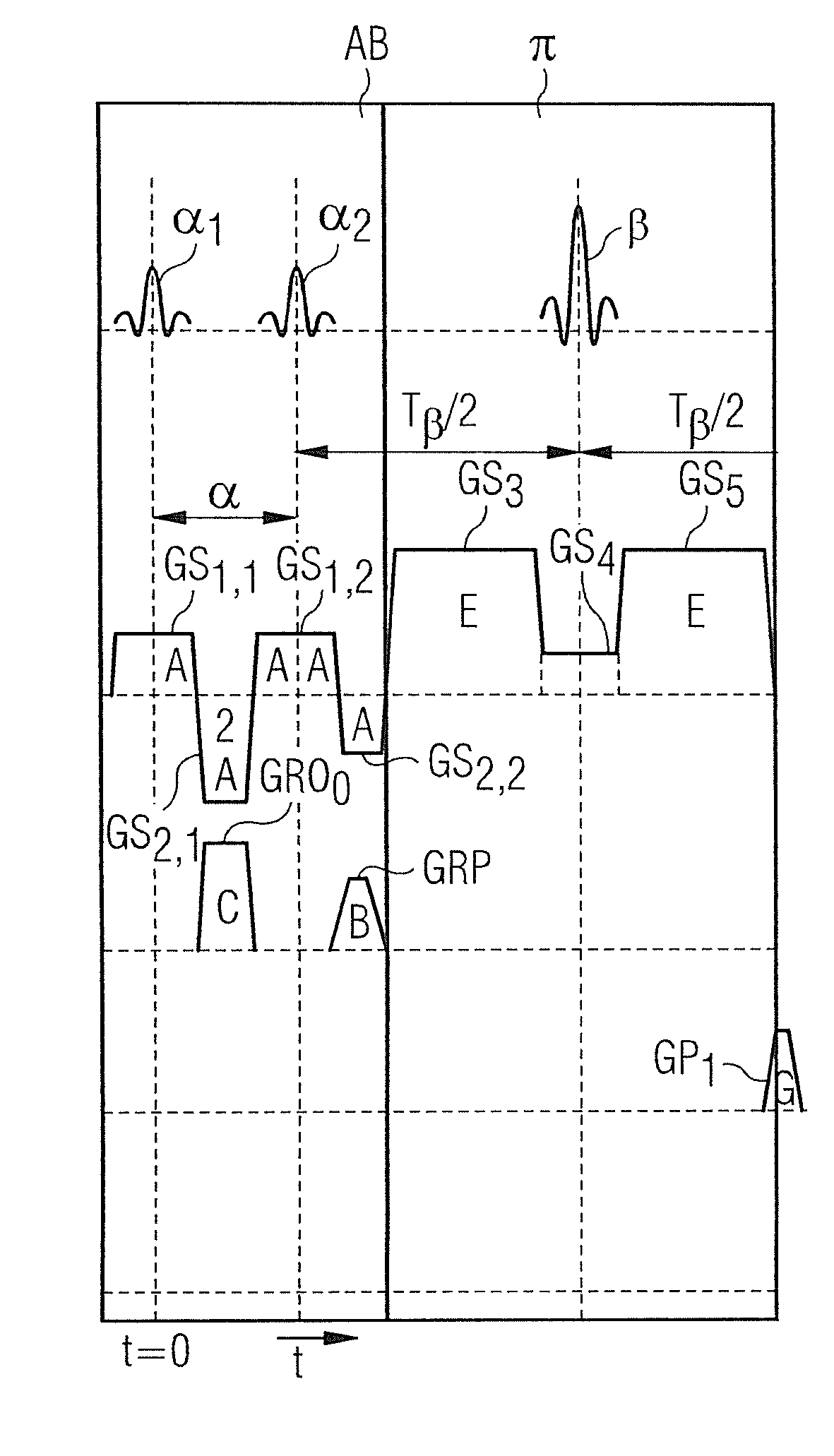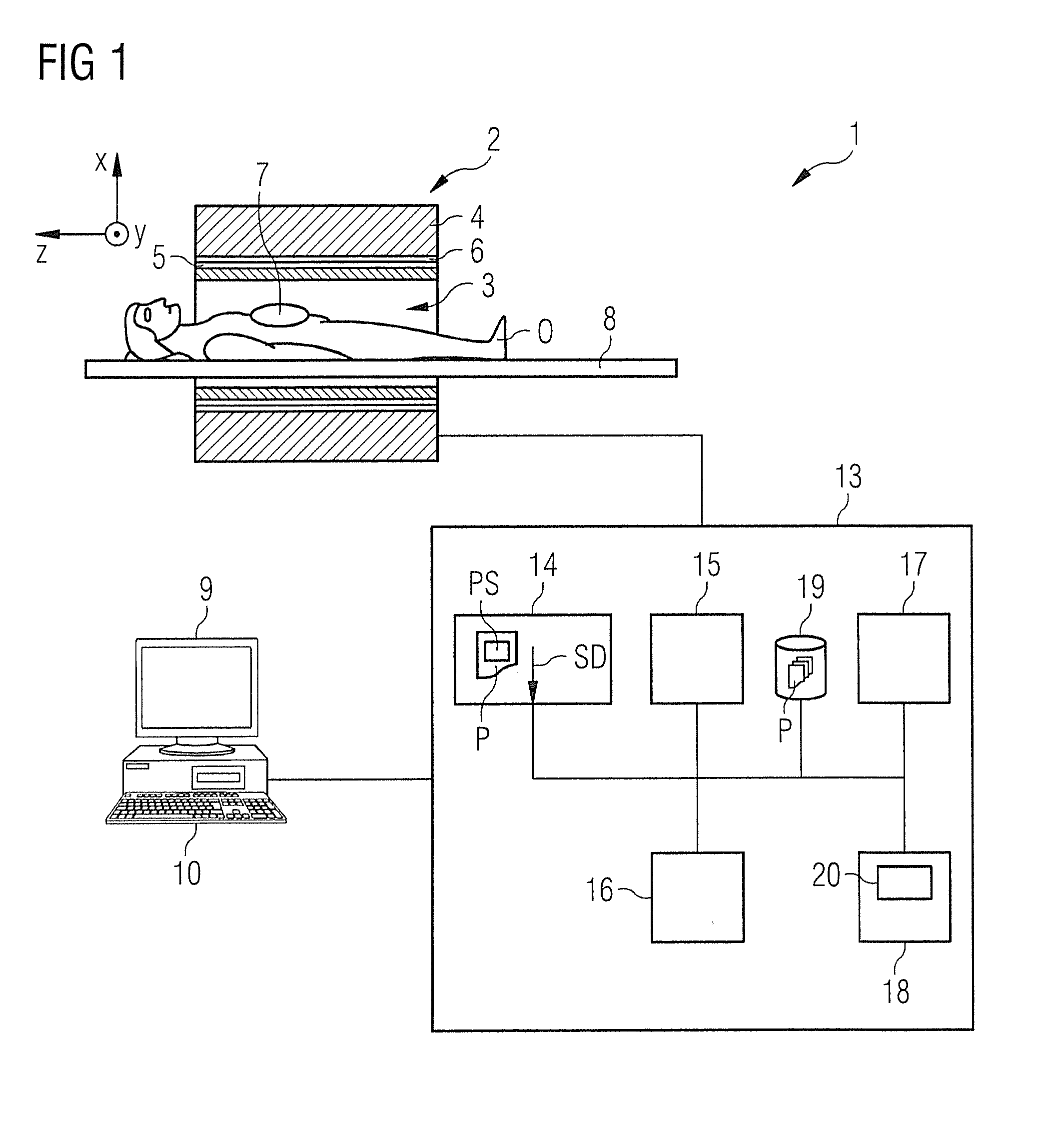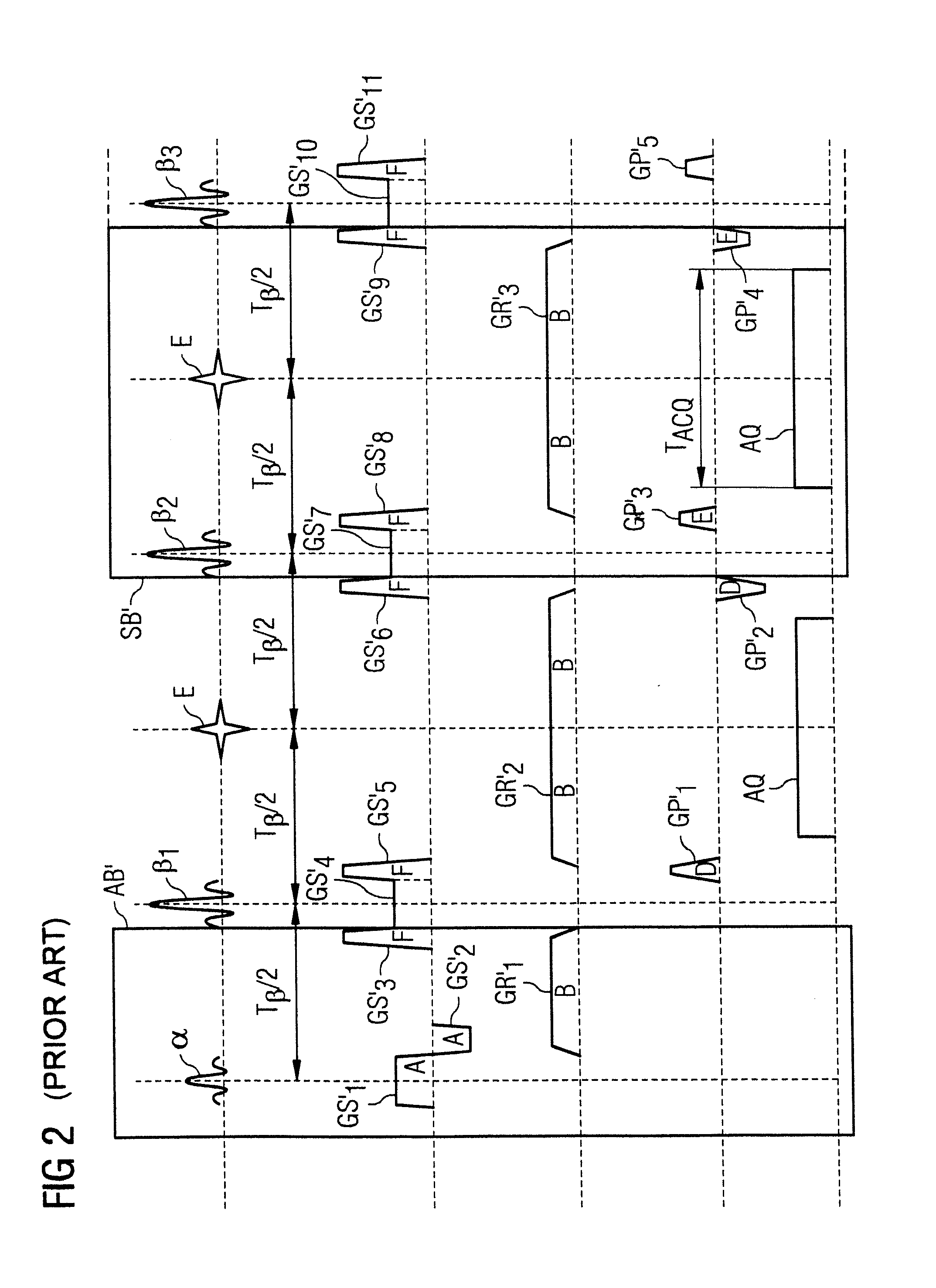Method and control device for operating a magnetic resonance system
a magnetic resonance imaging and control device technology, applied in measurement devices, instruments, acoustic wave reradiation, etc., can solve the problems of tesla, limited acquisition period of tse sequence, and currently inability to allow sar exposur
- Summary
- Abstract
- Description
- Claims
- Application Information
AI Technical Summary
Benefits of technology
Problems solved by technology
Method used
Image
Examples
Embodiment Construction
[0067]FIG. 1 shows an approximate invention-based magnetic resonance imaging system 1 (subsequently also called “MR system”). On the one hand, it comprises the actual magnetic resonance scanner 2 with an examination room 3 or tunnel, into which it is possible to insert an examination object O, or in this case a patient or test person in whose body the examination object, for example a specific organ, is located.
[0068]In conventional manner, the magnetic resonance scanner 2 is equipped with a basic field magnet system 4, a gradient system 6, as well as an RF antenna transmission system 5 and an RF antenna reception system 7. In the embodiment shown, the RF antenna transmission system 5 is a whole body coil permanently installed in the magnetic resonance scanner 2, while the RF antenna reception system 7 is composed of local coils that can be arranged on the patient or test person (symbolized in FIG. 1 only by a single local coil). Basically, it is also possible to use the whole body ...
PUM
 Login to View More
Login to View More Abstract
Description
Claims
Application Information
 Login to View More
Login to View More - R&D
- Intellectual Property
- Life Sciences
- Materials
- Tech Scout
- Unparalleled Data Quality
- Higher Quality Content
- 60% Fewer Hallucinations
Browse by: Latest US Patents, China's latest patents, Technical Efficacy Thesaurus, Application Domain, Technology Topic, Popular Technical Reports.
© 2025 PatSnap. All rights reserved.Legal|Privacy policy|Modern Slavery Act Transparency Statement|Sitemap|About US| Contact US: help@patsnap.com



